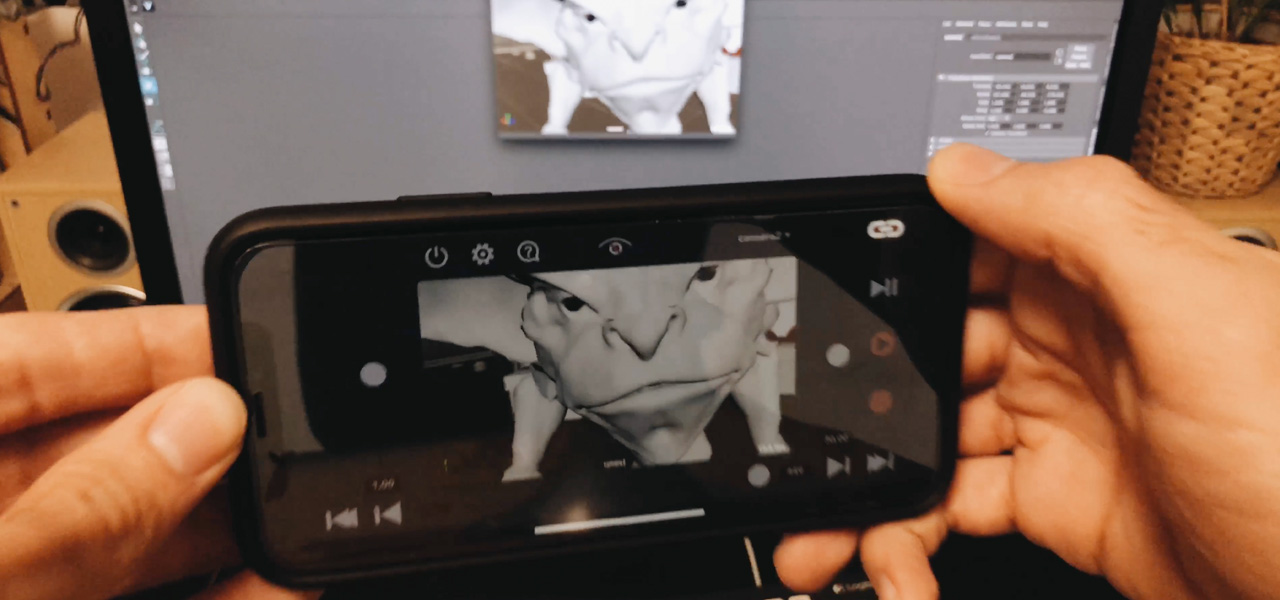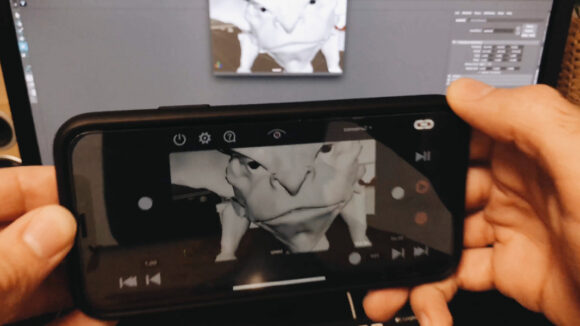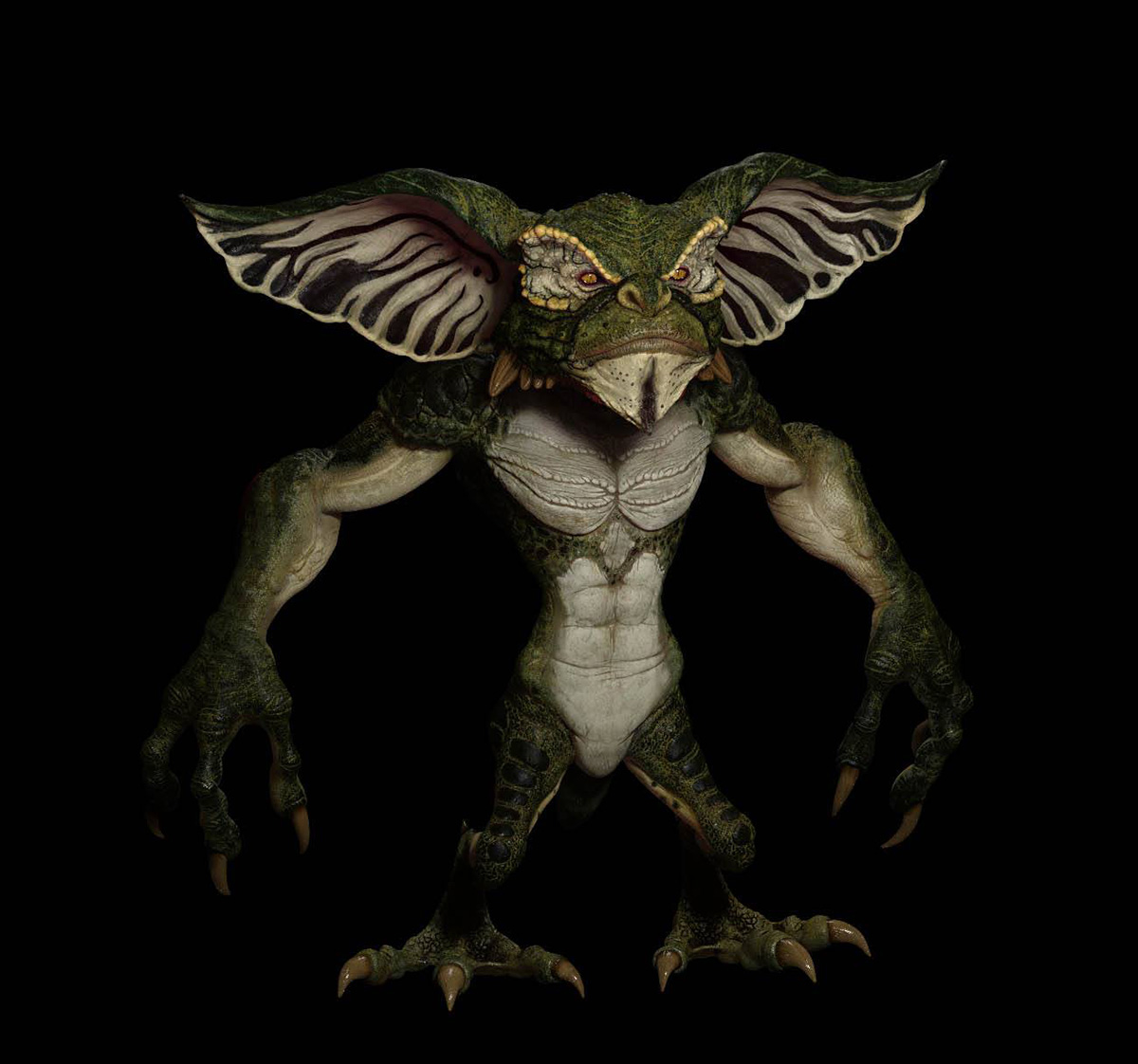

How This CG ‘Gremlins’ Fan Piece Came Alive With The Help Of A Virtual Camera iPhone App
In Gremlin, a piece by animator Christian Dan Bejarano and a group of collaborators, the project was an opportunity to convert one of the beloved characters from the Gremlins film series into cg, and also experiment with some new tools, including a camera motion capture app called Virtucamera.
Cartoon Brew asked Bejarano about the project’s origins, how he worked together with others online, and how that Virtucamera app came into play.
Making a Gremlin
The idea for the piece came to Bejarano when he saw that his friend, 3d artist David Vercher, had been modeling a cg Gremlin. “I thought, ‘Oh man, I want to animate that!’ I was thinking we hadn’t really ever seen a Gremlin in cg ever. So I thought that it could be a great opportunity for making something special for me and for others who enjoy those kinds of retro movies.”

By day, Bejarano is a lead animator at Ilion Animation Studios in Madrid (one of his recent projects is the studio’s Wonder Park, which Paramount Animation will release in March). He says it was easy to find others to collaborate with on Gremlin – all the work was done remotely and participants communicated via a private social media group.
With a Christmas theme in mind, Bejarano’s team began on production, telling the story of a Gremlin that eats cookies perhaps past midnight, and then covers itself in water (in the films, of course, this leads to devastating consequences). The short filmmakers strove to replicate, in cg, the feeling of the original practical creatures. “I wanted to make something real and believable, but at the same time try to maintain the rules and the appeal of the puppets,” said Bejarano. “For example, I didn’t want an excess of facial movement. I imagined these creatures as very rigid because of the type of skin they have.”
Amongst the many challenges of the piece – which ranged from texturing through to final effects simulations – was finding any reference of a Gremlin walk cycle, partly because of the nature in which the creatures were puppeteered in the films. Berjarano therefore had to imagine how the Gremlin might “make big actions like jumping out of the gift box or climbing onto the table, while trying to maintain the original spirit of the movies.”
Synthetic camera moves
Aiding in the animation process, and more specifically in determining camera movement, was Berjarano’s use of the Virtucamera app, a tool developed by Pablo García. “Virtucamera app was one the more important things that happened on the short film,” said Berjarano. “I knew what type of camera movement I wanted to use but I didn’t know how to reach it.”
The app essentially acts as a proxy Maya camera via an iPhone or an iPad. The user can move their device in a desired way, which translates the motion into Maya without the need for keyframing. For Berjarano, it allowed him to input a handheld feel into the framing of Gremlin. “It was so easy and precise to use,” he said, “that I recorded all the cameras in one morning.”
At this point, Virtucamera is still in beta form, but once released will require users to download the app itself and a plugin for Maya. Once a user connects their iOS device via wifi with the computer running Maya, they will be able to see the Maya camera inside the app.
Berjarano suggests Virtucamera is a tool that seems apt for creating fast camera layouts or constructing previs, and even for camera polishes in the final stages of production. He says he would like to use it on a future project. As for Gremlin, that’s also something Berjarano would like to take further.
“I would like to do more stuff with the Gremlin, something much bigger. But I’m only a fan and I don’t have the copyright of the creature. However, this creature deserves more and I heard that Chris Columbus (the original Gremlins screenwriter) is working on the script for a new sequel. It will be awesome to see it again in a big screen.”
